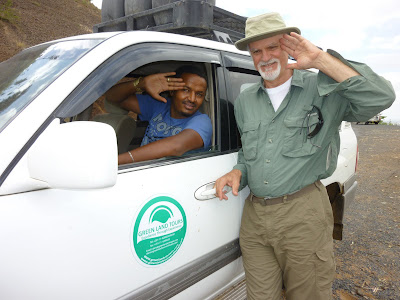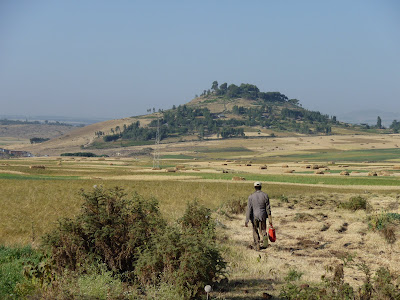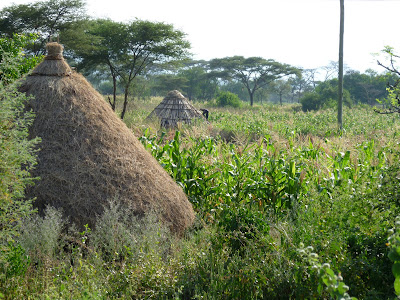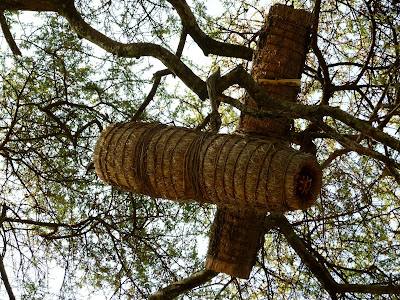
In mid-November 2010, John and I embarked on a 2 week trip to Ethiopia with 10 of those days traveling to Southern Ethiopia almost to the borders of Kenya and Sudan. We traveled in a Green Land Tours 2007 Toyota Landcruiser driven by our fabulous driver/guide, Sammy. It was an arduous trip, with 10-hour days of driving over rough roads, avoiding cattle and people every inch of the way. We went because we wanted to experience the myriad of cultures present in this land.
There are almost 80 million people living in Ethiopia and there are 86 different languages/cultures. Fiftysix of these tribes live in the southern part of the country. The largest tribe is the Oromo with about 32 million people. We also visited one of the smallest, the Karo tribe, with less than 500 people. Southern Ethiopia is home to some of the most primitive tribes in Africa and we wanted to experience their lifestyle and visit their countryside. We were able to visit about 16 tribes, 8 villages in depth and attended four market days. Many of the villages are very isolated. And, walking is, for many the only form of transportation.
We encountered a wide range of geography in our travels. We saw scrub desert and semi-desert with lots of acacia trees, savannahs, productive river bank lands, rolling hills covered with fields of maize (corn), large plateaus, a string of large brown lakes and a myriad of waterfowl, and high mountains with terraced hillsides. All of the tribes we visited raised beef, sheep and goats. Those lucky enough to have productive land also farmed. It was amazing to see with our own eyes the way these people use every available resource to its fullest.
We started and ended our trip in Addis Ababa, the capital, which has a population of over 3 million and is located at 7,000 feet above sea level. Many Djiboutians escape the summer heat by fleeing to Addis. We have been to Addis several times. It is only an hour away by plane. The one drawback is the poor air quality on work days due to the exhaust from so many old autos. However, for all of its people, Addis and countryside of Ethiopia is overall a very clean country. John and I really enjoy the Ethiopian people in and around Addis. After we returned from our road trip to Southern Ethiopia, we spent 5 days in Addis. We rested, ate great food, went to the movies (something Djibouti does not have), had a great couples massage, listened to some good music, purchased some more beautiful silver jewelry and spent a lovely afternoon with our Ethiopian friends.
Agriculture is the pillar of the Ethiopian economy. On our travels to the south we saw many different types of agriculture. We drove by very large flower farms with row after row of huge greenhouses which were owned and operated by the Dutch. Small family farms and larger community owned fields were plentiful in the non-arid parts of the countryside. Everywhere we went we encountered beehives hanging from the acacia trees. Ethiopia is Africa's premier honey producer and is fourth in the world. Cattle raising is the second largest source of foreign currency. Cattle are everywhere and all of them Angus.
Pictures: (1) John and Sammy, our Green Land Tours driver/guide; (2) cattle grazing; (3) fields of teff, wheat and barley just south of Addis; (4)fields of corn and food storage; (5) beehives hanging from an acacia tree




